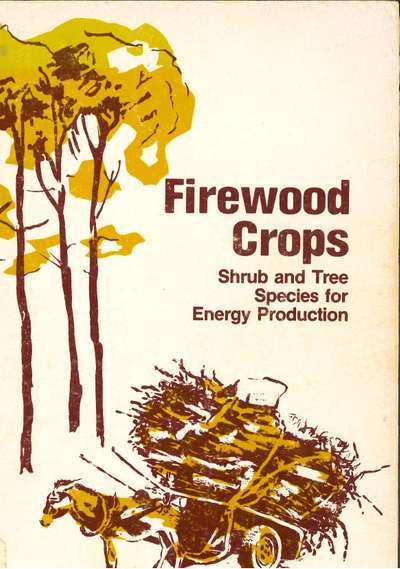Firewood Crops, Vol. 1 (Shrub and Tree Species for Energy Production)
National Academy of Science

The problems of firewood shortages and the promise of firewood plantations were described extensively in the first volume. No less than one-and-a-half billion people in developing countries derive at least 90 percent of their energy requirements from wood and charcoal. Another billion people meet at least SO percent of their energy needs this way. Indeed, it has been estimated that at least half the timber cut in the world still serves its original role for mankind: as fuel for cooking and heating.
This essential resource, however, is seriously threatened. The developing world is facing a critical firewood shortage. The growth in human population is far outpacing the growth of new trees- not surprising when the average user burns as much as a ton of firewood a year. The results are soaring prices for wood, a growing drain on incomes and physical energy expended to satisfy basic fuel needs, the wasteful burning of animal manures to cook food rather than help produce it, and an ecologically disastrous and potentially irreversible spread of treeless landscapes.
There is no single magical solution to the firewood scarcity, but some blend of fuel conservation, tree planting, and new technologies could certainly ease its severity in any country. The failure of many affected countries to meet the firewood challenge does not, in the final analysis, reflect an absence of suitable technologies, but rather a failure of political systems, ofsocial organization.
Many of the species included in this book would not be appropriate under certain conditions for fuelwood; for example, some of them have much higher value for other uses. The advantage of Albizio and a number of pine species, for instance, is that they have multiple uses. Should fuel needs diminish, the species can be turned to these alternative uses. Albizio is used for pulp; it could at the same time serve as firewood ifthat were needed.
In the Korean fuelwood plantation program, 30 percent of the species planted were required to have commercial uses in addition to fuelwood. The idea was that if fuelwood demands turned out to be less than initially anticipated, the trees would stillserve some useful purpose.
Setting up a dependable national supply of firewood seems an ideal project for combined action by a country's government and its people.
รายละเอียดสิ่งพิมพ์
- ตีพิมพ์แล้ว: 1983
- ผู้ตีพิมพ์: National Academy Press
- Dewey Decimal: 634.98
- ห้องสมุด ECHO: 634.98 NAS